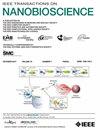Molecular Communication-Based Intelligent Dopamine Rate Modulator for Parkinson’s Disease Treatment
IF 4.4
4区 生物学
Q1 BIOCHEMICAL RESEARCH METHODS
引用次数: 0
Abstract
Parkinson’s disease (PD) is a progressive neurodegenerative disease, and it is caused by the loss of dopaminergic neurons in the basal ganglia (BG). Currently, there is no definite cure for PD, and available treatments mainly aim to alleviate its symptoms. Due to impaired neurotransmitter-based information transmission in PD, molecular communication-based approaches can be employed as potential solutions to address this issue. Molecular Communications (MC) is a bio-inspired communication method utilizing molecules to carry information. This mode of communication stands out for developing bio-compatible nanomachines for diagnosing and treating, particularly in addressing neurodegenerative diseases like PD, due to its compatibility with biological systems. This study presents a novel treatment method that introduces an Intelligent Dopamine Rate Modulator (IDRM), which is located in the synaptic gap between the substantia nigra pars compacta (SNc) and striatum to compensate for insufficiency dopamine release in BG caused by PD. For storing dopamine in the IDRM, dopamine compound (DAC) is swallowed and crossed through the digestive system, blood circulatory system, blood-brain barrier (BBB), and brain extracellular matrix uptakes with IDRMs. Here, the DAC concentration is calculated in these regions, revealing that the required exogenous dopamine consistently reaches IDRM. Therefore, the perpetual dopamine insufficiency in BG associated with PD can be compensated. This method reduces drug side effects because dopamine is not released in other brain regions. Unlike other treatments, this approach targets the root cause of PD rather than just reducing symptoms.用于帕金森病治疗的基于分子通讯的智能多巴胺速率调节器
帕金森病(PD)是一种进行性神经退行性疾病,它是由基底神经节(BG)多巴胺能神经元的丧失引起的。目前,帕金森病还没有确切的治愈方法,现有的治疗方法主要是缓解其症状。由于PD中基于神经递质的信息传递受损,基于分子通信的方法可以作为解决这一问题的潜在解决方案。分子通信(MC)是一种利用分子携带信息的仿生通信方法。由于与生物系统的兼容性,这种通信模式在开发用于诊断和治疗的生物相容性纳米机器方面脱颖而出,特别是在解决神经退行性疾病(如PD)方面。本研究提出了一种新的治疗方法,即在黑质致密部(SNc)和纹状体之间的突触间隙引入智能多巴胺速率调节剂(IDRM),以补偿PD引起的BG多巴胺释放不足。为了在IDRM中储存多巴胺,多巴胺化合物(DAC)被吞下并与IDRM一起通过消化系统、血液循环系统、血脑屏障(BBB)和脑细胞外基质摄取。在这里,DAC浓度在这些区域计算,揭示所需的外源性多巴胺一致达到IDRM。因此,与PD相关的BG持续多巴胺不足可以得到补偿。这种方法减少了药物的副作用,因为多巴胺不会在大脑的其他区域释放。与其他治疗方法不同,这种方法针对的是帕金森病的根本原因,而不仅仅是减轻症状。
本文章由计算机程序翻译,如有差异,请以英文原文为准。
求助全文
约1分钟内获得全文
求助全文
来源期刊

IEEE Transactions on NanoBioscience
工程技术-纳米科技
CiteScore
7.00
自引率
5.10%
发文量
197
审稿时长
>12 weeks
期刊介绍:
The IEEE Transactions on NanoBioscience reports on original, innovative and interdisciplinary work on all aspects of molecular systems, cellular systems, and tissues (including molecular electronics). Topics covered in the journal focus on a broad spectrum of aspects, both on foundations and on applications. Specifically, methods and techniques, experimental aspects, design and implementation, instrumentation and laboratory equipment, clinical aspects, hardware and software data acquisition and analysis and computer based modelling are covered (based on traditional or high performance computing - parallel computers or computer networks).
 求助内容:
求助内容: 应助结果提醒方式:
应助结果提醒方式:


